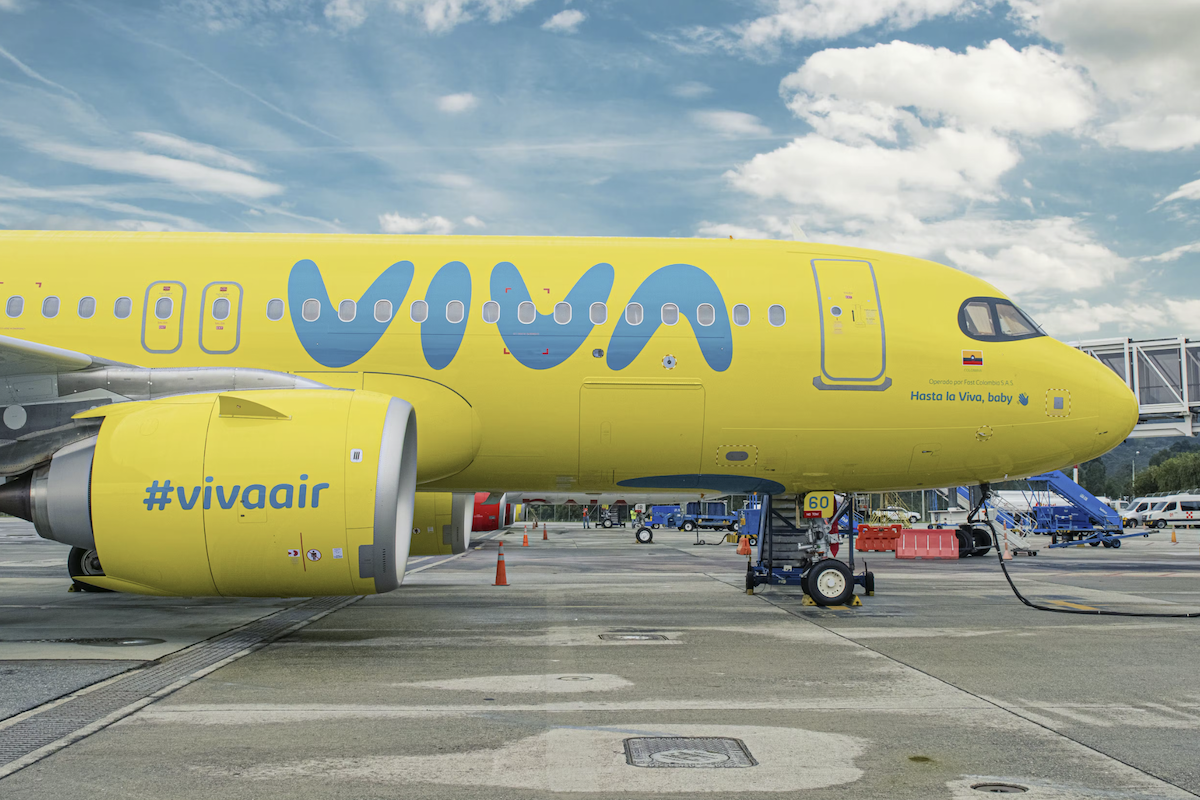Avianca-Viva Air Merger Cleared by Colombia's Regulator

Photo Credit: Viva Air
Colombia's civil aviation regulator, Aerocivil, has signed off on the controversial combination of Avianca and bankrupt Viva Air, the country's first and third largest airlines.
The merger, which has been held up by Aerocivil due to competition concerns and allegations of antitrust violations, was approved with conditions on Wednesday. As part of the agreement, Avianca must relaunch Viva as an independent brand — the discounter shut down in February — and honor all travelers affected by its closure. It also must divest slots at Bogotá's El Dorado airport, return one daily Colombia-Argentina frequency for new competition, and maintain a codeshare with regional airline Satena among other conditions.
Avianca and Viva, as well as other parties who have commented on the deal, have 13 days to agree to Aerocivil's terms before the approval is final. If all agree to the conditions, then the merger can go ahead and Avianca can set a date for Viva's relaunch.
The deal will reshape Colombia's aviation market. Even with the conditions that will limit the combined airline's presence in Bogotá, the country's largest market, Avianca will go from controlling a roughly 40 percent share of all seats within, to, and from the country to nearly 55 percent based on 2022 numbers, according to Diio by Cirium schedule data. The final share will be lower due to Viva's troubles but likely above 50 percent of seats. That puts the legacy airline in a much stronger position in its home market and improves its ability to offer a segmented product. Avianca stands as the global brand featuring loyalty and other benefits, and Viva is the budget brand for the most cost-conscious travelers.
In addition, the Avianca-Viva merger is the precursor to a much bigger deal: The combination of Avianca and Gol in Brazil to form the new Abra Group. The new group, akin to an International Airlines Group (IAG) for Latin America, will be significantly larger than either airline on its own and better able to challenge regional leader Latam Airlines. The deal also signals what could be a shift towards more consolidation in the long-splintered Latin American market.
Abra "allows us to be the biggest operator of the lowest cost in the region," Avianca CEO Adrian Neuhauser said in October. "The philosophy of Gol and our new philosophy are very similar."
Abra intends to launch an initial public offering in either London or New York within 18 months, Bloomberg reported earlier in April. Gol is listed in New York, and Avianca delisted there as part of its emergence from U.S. Chapter 11 bankruptcy restructuring in December 2021.
Competitors, despite objections to the Avianca-Viva merger, stand to gain from the deal. Aerocivil named Aerolineas Argentinas, JetSmart, Latam, Ultra Air, and Wingo as "interested parties" that can seek the divested slots in Bogotá and the relinquished Colombia-Argentina frequencies. Latam is eager to grow in Colombia, and already the second largest airline in the country with a more than 18 percent share of seats in 2022, Diio data show. Wingo, owned by Copa Airlines, primarily feeds Colombian travelers to its parent's megahub in Panama City but has notified Aerocivil of plans to add new domestic routes in Colombia. And JetSmart, following aborted attempts to take over Viva and Ultra, recently received a Colombian air operators certificate and could use Bogotá slots to establish itself in the market.
Ultra shut down at the end of March and, as yet, has no firm plan to resume flying.
U.S. airlines also stand to benefit from the market shifts in Colombia. United Airlines has a stake in Avianca, while Delta Air Lines owns a share of Latam, and American Airlines has a pending investment in JetSmart. The U.S. is Colombia's largest international market.
Colombia is Latin America's third largest airline market after Mexico and Brazil. Domestic flyer numbers jumped 20 percent last year from 2019 levels to 47.9 million passengers, according to data from trade group ALTA. And international passenger traffic ended 2022 up 14 percent from pre-pandemic levels.
An Avianca spokesperson did not respond to a request for comment.
